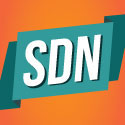Outlines how its programmable network allows enterprises, network, and cloud providers to connect to each other rapidly.

BARCELONA -- Mobile World Congress -- Equinix on Monday unveiled the SDN engine that enables its Cloud Exchange, a service to allow enterprises, network providers and cloud providers to rapidly configure connections between multiple clouds.
Equinix Inc. (Nasdaq: EQIX) Programmable Networking is the engine driving the Equinix Cloud Exchange multicloud service, which the company introduced about 10 months ago. (See Equinix Brings Exchange Model to Cloud.)
"What's new here is we're talking more about what's making Equinix Cloud Exchange work," says Ihab Tarazi, chief technology officer for Equinix.
Equinix Cloud Exchange connects enterprise customers, cloud providers and networks to each other. Enterprise customers use the service to connect to IBM Corp. (NYSE: IBM) Bluemix, Google (Nasdaq: GOOG) Apps and Microsoft Corp. (Nasdaq: MSFT) Office 365. Rather than having to connect to each service individually, enterprise customers connect to Equinix Cloud Exchange, which handles the rest, including prioritizing traffic from one service or app over another.
Equinix has 100 organizations connecting to Cloud Exchange -- 50 cloud services and networks, and the remainder enterprise customers.
Without a service like Equinix Cloud Exchange, the time for enterprises to connect to multiple cloud providers is "often measured in weeks, not the seconds required to be truly agile," says Tarazi. "We designed the Equinix Cloud Exchange specifically to meet these provisioning needs and enable customers to connect to multiple cloud service providers (CSPs) either via colocating in an Equinix data center or through their choice of network service providers (NSPs) through a single port connection."
Using Equinix Cloud Exchange, customers can self-provision network connections rapidly, Tarazi says. "It's highly scalable, provides ease of management via automation and ensures customers can maintain a vendor-neutral strategy."
Equinix Cloud Exchange uses Tail-f's Network Control System to power the service. "What Tail-F does is it's kind of like a translator with plugins for equipment providers," Tarazi says. Equinix uses Tail-f to connect switches from Alcatel-Lucent (NYSE: ALU), Juniper Networks Inc. (NYSE: JNPR) and Cisco Systems Inc. (Nasdaq: CSCO) Tail-f enables Equinix to use Netconf and Yang to get that equipment working together even if the equipment doesn't directly support those protocols.
Want to know more about SDN? Visit Light Reading's SDN technology content channel.
Equinix writes its own models in Yang to launch services such as a VPN. "Once we build the model for what the service should do, the Cisco tool allows us to avoid all the hard work for any different kinds of equipment," Tarazi says.
Equinix Programmable Network's reliance on Netconf and Yang means it can use a transaction model for management, rather than older SNMP and CLI tools for managing switches. SNML and CLI require network operators to configure each switch individually. "If you were activating a circuit from Chicago to New York, in the old days before Netconf, you'd have to go into every switch one by one to activate it," Tarazi says. With Netconf, a network operator can send the same instruction to every switch at once, which enhances agility. "If you're trying to activate a lot of devices across a distributed network -- which is what happens with SDN -- you're going to need Netconf," he says.
The endorsement from Equinix is a big deal for Cisco, which acquired Tail-f last year and has been working to convince network operators, as well as competitors who rely on the management software, that Cisco will keep Tail-f's products vendor-neutral. Cisco made Tail-f's ConfD network configuration tool free for a basic version late last month. (See Cisco Woos Competitors With Free ConfD.)
More about Equinix Cloud Exchange:
— Mitch Wagner, 


 , West Coast Bureau Chief, Light Reading. Got a tip about SDN or NFV? Send it to [email protected].
, West Coast Bureau Chief, Light Reading. Got a tip about SDN or NFV? Send it to [email protected].
About the Author(s)
You May Also Like










